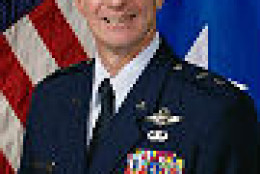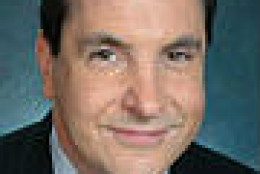Defense
-
Navy officials plan an industry day to formally launch a new framework for IT procurement, designed to work within the existing acquisition system to much more rapidly insert commercial technologies into Navy networks.
March 24, 2015 -
Larry Allen, president of Allen Federal Business Partners, joins host Mark Amtower to discuss the top procurement issues in 2015, and how they are impacting contractors. March 23, 2015
March 23, 2015 -
Assistant Secretary of the Navy Sean Stackley tells the Senate Armed Services Subcommittee on Seapower that out of eight shipyards in the United States, half are one contract away from being what he calls "not viable." Bryan Clark, senior fellow for the Center for Strategic and Budgetary Assessments, tells In Depth with Francis Rose about the health of the maritime contracting industry.
March 23, 2015 -
When the Obama administration released its 2016 budget request last month, it left some areas sort of blank. Case in point: The IT spending details for the Navy and Army, two of the biggest technology spenders in the government. Bloomberg Government analysts raided the IT dashboard this month to find some of the missing data. Bloomberg quantitative analyst Jesse Holler joined Tom Temin on the Federal Drive with a clearer picture of Army and Navy IT plans.
March 23, 2015 -
At the end of last year, Congress ordered up a new commission to study the Army's future. We now know who will serve on that eight-member study panel.
March 23, 2015 -
As one of the military's highest-ranking women and its first openly gay general, Brig. Gen. Tammy Smith, has a busy speaking calendar, especially around this time of year. It's women's history month. Smith is the deputy chief of staff of the Army Reserve, which prides itself on having women in 95 percent of its occupations. Federal News Radio Reporter Emily Kopp asked Smith whether she thought the Army Reserve was more welcoming to women than other parts of the military.
March 19, 2015 -
Cyber déjà vu can happen when the same or similar cyber attacks hit multiple agency networks. But cyber déjà vu can be a good thing if your agency looks at the problem in a different way. That's according to Greg Boison, director of Homeland Cybersecurity at Lockheed Martin. On In Depth with Francis Rose, he shared three ways to take advantage of cyber déjà vu to turn your agency's strategy from reactive to proactive.
March 19, 2015 -
Two priorities shape the way the United States Army will drive its business: Warfighting and enterprise information environment mission areas. Those priorities are more important in an Army where human power, and budget, is getting smaller. Doug Wiltsie is program executive officer for Enterprise Information Systems for the Army. On In Depth with Francis Rose, Doug laid out three priorities for 2015 and he says the first one is uninterrupted capability delivery.
March 18, 2015 -
Dr. Mica Endsley, chief scientist of the Air Force, works to combat cyber concerns. "I would prioritize defense of our computer systems to be probably among the highest priorities that we have today," she tells Federal News Radio's Agency of the Month radio show.
March 18, 2015 -
The Air Force owns a huge stockpile of intercontinental ballistic missiles and bombers that are quickly aging in place. It owns two out of three legs of the US nuclear triad; the Navy owns the third. Maj. Gen. Garrett Harencak, assistant chief of staff for strategic deterrence and nuclear integration for the Air Force, tells Federal News Radio's Jason Fornicola how the service is modernizing its two legs of the US nuclear triad.
March 17, 2015 -
You might remember Charla Nash. She's the woman who was horribly disfigured when attacked by a friend's pet chimpanzee back in 2009. The Pentagon has been closely watching her long recovery. More than watching, actually. The Army has paid hundreds of thousands of dollars of Nash's medical bills. The hope is Nash's ordeal can help the military learn to care for disfigured soldiers returning from war. Dr. Wendy Dean, a medical advisor in the Army's Tissue Injury and Regenerative Medicine Program Management Office, joined Tom Temin on the Federal Drive with more on the effort and what the military hopes to learn.
March 17, 2015 -
Under a new agreement, GSA would reduce the Army's fee to use the professional services governmentwide acquisition contract to 0.1 percent from 0.75 percent. This is the second major MOU signed by GSA and a military service.
March 17, 2015 -
The new maritime strategy for the Navy, Marine Corps, and Coast Guard relies on four key tenets that shape how the services will face future challenges. Bryan McGrath, a former naval officer, is managing director of the FerryBridge Group, and assistant director of the Hudson Center for American Seapower. On In Depth with Francis Rose, he said those four ideas will not only cause debate among strategy purists in the defense community, but they also cement the legacy of Chief of Naval Operations Adm. Jonathon Greeenert.
March 16, 2015 -
The U.S. Air Force will award a contract for a long-range strike bomber this year. That contract could completely change the landscape of the aerospace industry, according to Richard Aboulafia. He's vice president of analysis at the Teal Group Corporation. On In Depth with Francis Rose, he said if there's only one thing to pay attention to in the aerospace industry this year, this contract is it.
March 12, 2015 -
Maj. Gen. Garrett Harencak, the Air Force's Assistant Chief of Staff for Strategic Deterrence and Nuclear Integration, balances work to fulfill President Obama's vision with the need to keep U.S. nuclear capabilities viable. "As long as nuclear weapons exist, we'll maintain a safe, secure and effective stockpile for us and our allies," he tells Federal News Radio's Agency of the Month radio show.
March 12, 2015













